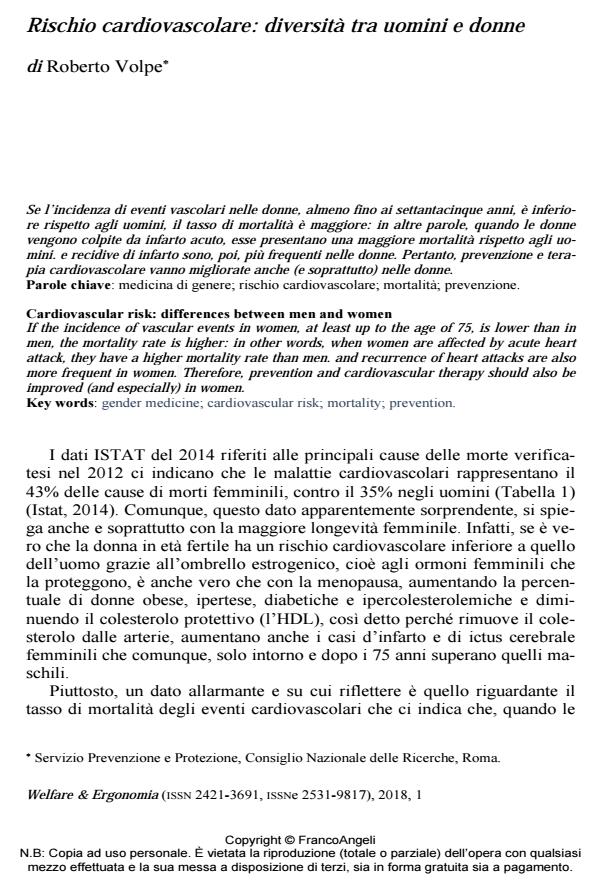Cardiovascular risk: differences between men and women
Journal title WELFARE E ERGONOMIA
Author/s Roberto Volpe
Publishing Year 2019 Issue 2018/1
Language Italian Pages 8 P. 135-142 File size 243 KB
DOI 10.3280/WE2018-001009
DOI is like a bar code for intellectual property: to have more infomation
click here
Below, you can see the article first page
If you want to buy this article in PDF format, you can do it, following the instructions to buy download credits

FrancoAngeli is member of Publishers International Linking Association, Inc (PILA), a not-for-profit association which run the CrossRef service enabling links to and from online scholarly content.
If the incidence of vascular events in women, at least up to the age of 75, is lower than in men, the mortality rate is higher: in other words, when women are affected by acute heart attack, they have a higher mortality rate than men. and recurrence of heart attacks are also more frequent in women. Therefore, prevention and cardiovascular therapy should also be im-proved (and especially) in women.
Keywords: Gender medicine; cardiovascular risk; mortality; prevention.
Roberto Volpe, Rischio cardiovascolare: diversità tra uomini e donne in "WELFARE E ERGONOMIA" 1/2018, pp 135-142, DOI: 10.3280/WE2018-001009